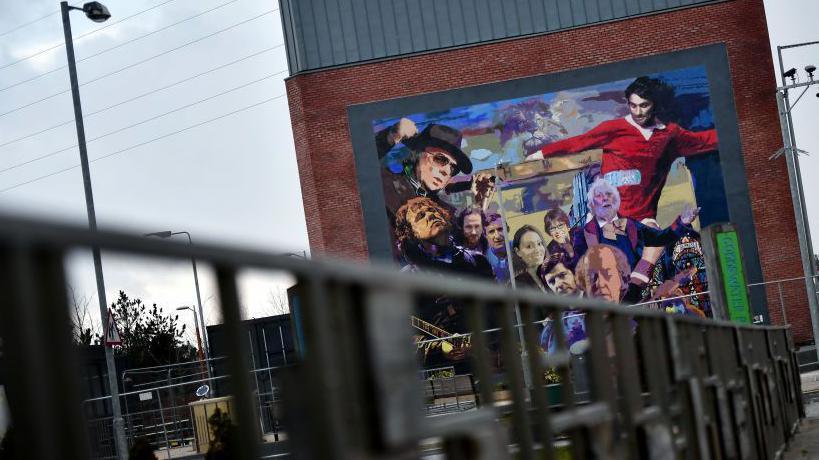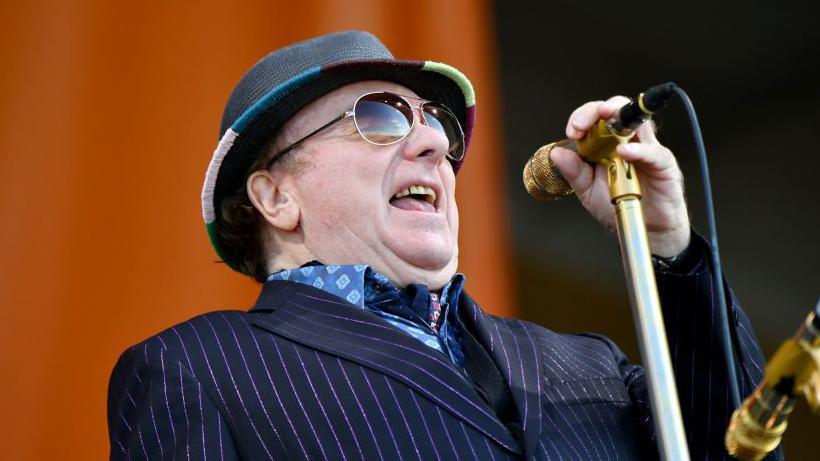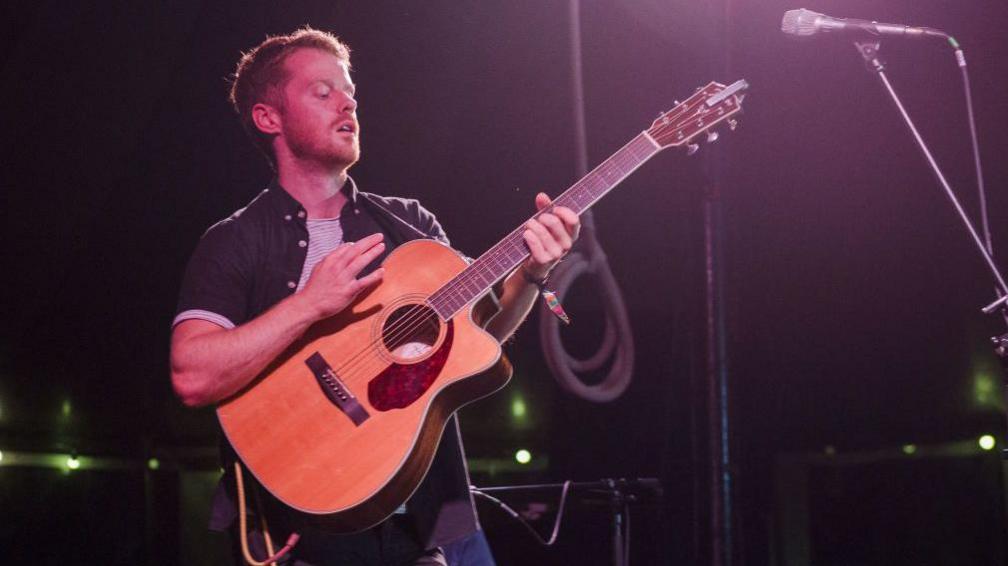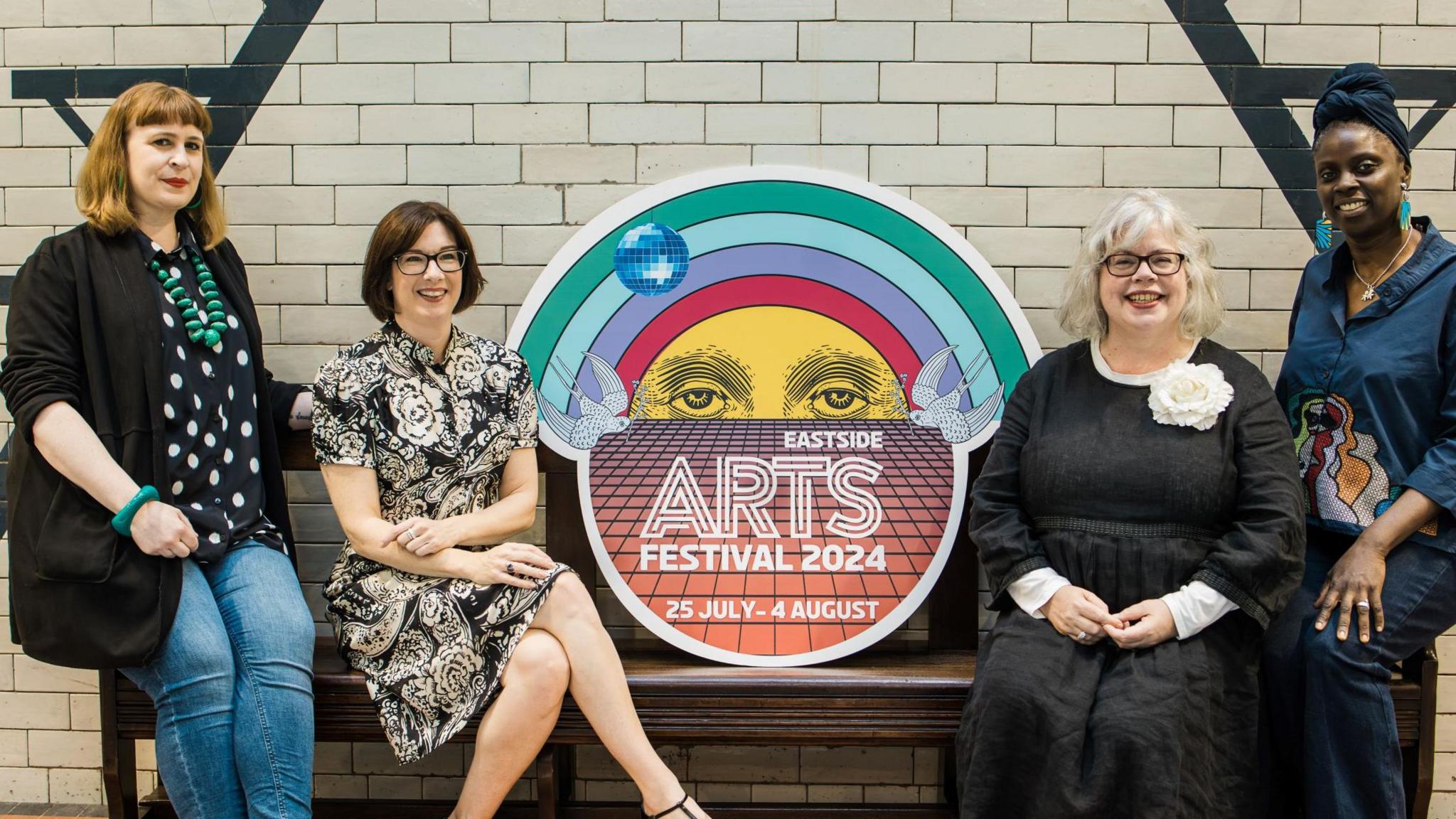Accessibility is key as EastSide Arts Festival returns

The festival showcases the work of local artists, writers and performers in east Belfast
- Published
This year's EastSide Arts Festival is incorporating British Sign Language (BSL) interpretation into more events, organisers have said.
The festival, which began in 2012 as the East Belfast Arts Festival before being rebranded in 2015, will run this year for 11 days from 25 July.
Some of the big names that have graced the festival in the past include Van Morrison, who headlined in 2015, and Anthony Toner, who launched his album at the festival.
The West Ocean String Quartet, whose music was played on the International Space Station, and Irish jazz singer Mary Coughlan have also performed.
The festival includes more than 60 accessible and inclusive events, showcasing many venues across east Belfast.
Organisers have said they have made a concerted effort to enhance accessibility by incorporating British Sign Language (BSL) interpretation into several key events.
EastSide Arts Manager Rachel Kennedy said the team "wanted to create vibrant and inclusive events for all".
After speaking with some attendees of last year's event, Rachel said the festival in the past "hadn't really" catered to those who use BSL to communicate and found the feedback "incredibly helpful" when making sure this year's festival was accessible to all.
Events this year include a BSL-integrated walking tour titled Walking the Maritime Mile and Beyond, offering insights into Belfast's maritime history.
There is also a Dragtastic Cabaret, where drag performers will have their acts interpreted by Miss Dora Belle, a BSL interpreter and drag performer.

Van Morrison performed two concerts on his 70th birthday at the EastSide Arts Festival in 2015
The EastSide Visitor Centre Gallery will serve as a hub for various art displays and workshops, while The Picture House live play, featuring tales of classic cinema, takes place in Strand Arts Centre, which has recently relocated to Connswater Shopping centre following the start of the original historic building’s £4.09m refurbishment.
Sports and recreational venues, such as Cregagh Sports Club and Malone Rugby Club are also playing host to live performances and circus acts.

Ciaran Lavery, performing at the 2017 festival
Food and housing
At The Sanctuary Theatre, Three Pay Days, a play focusing on food and housing insecurity within east Belfast is a co-production between the festival and Kabosh Theatre Company.
General manager, Andrew Hume said it was a “privilege” to be able to tell stories that matter to people, about pressing ongoing issues.
“This play highlights the austerity that some within east Belfast are facing,” he said.
Kabosh have collaborated with EastSide Arts in the past, most recently on The King of East Belfast which was part of the festival in 2020.
Andrew says the festival is a “joyous celebration of creativity” and that festivals like this showcase the “unique characters and flavour of each neighbourhood”.

(L-R) Writer Jan Carson, EastSide Arts Festival manager Rachel Kennedy, theatre director Andrea Montgomery, Soultrane Festival's Siobhan Brown
'Invest in our arts and culture'
The festival's core sponsor is the Arts Council of Northern Ireland, the body which distributes funding to venues, arts organisations, writers, musicians, filmmakers and performers across Northern Ireland.
Recent figures released by the Arts Council of Northern Ireland (ACNI) state Wales spends twice as much on the arts per head of population compared to Northern Ireland.
According to ACNI, Northern Ireland spend £5.07 on arts funding per head of population in 2023/24 compared to £10.51 spent in Wales and £21.58 in the Republic of Ireland.
Rachel said that, with Stormont up and running again, “if we want a thriving country, we need to invest in our arts and culture sector”.